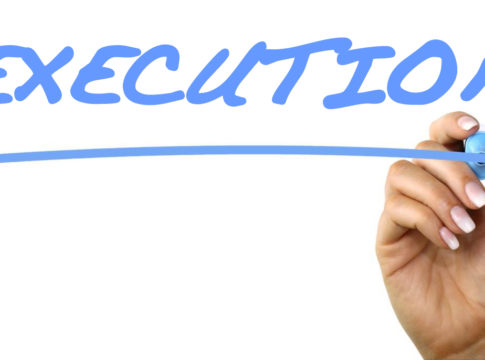Yes, everybody understands that “school leaders matter,” a truism now morphing into a cliché that trips easily from the tongue but typically fails to cause movement anywhere in the worlds of education policy and practice.
As a result, far too many U.S. schools lack the leaders that they need. Far too many principals lack the wherewithal—authority, resources, capacity, etc.—to lead effectively. And far too many school systems, especially urban districts with the most urgent need for dynamic competence in this crucial role, haven’t yet figured out the best way to find the strongest candidates in the land and induce them to move into the principal’s office.
This is scarcely a new problem. Indeed, it’s been so much discussed and fussed about that people may be wearying of it—or possibly have come to believe that surely it’s been solved by now.
Yet urgent leadership-related changes haven’t yet been made in American public education, or have been gingerly tried in just a handful of places. Most states still expect principals to possess a traditional administrative certificate, at least for those running district schools, and most of those certificates are still awarded primarily through completion of traditional “ed leadership” programs via graduate degrees in conventional education schools. Nor has the compensation of school principals much improved; indeed, the annual average salary difference in 2011–12 between what veteran high-school teachers (eleven to twenty years) and their principals get paid was roughly $40,000. In the District of Columbia, top teachers earn as much as their schools’ principals.
Great teachers deserve it, yes, but to have great principals we need to pay them more, considering the extent to which the accountability burdens laid on them have grown heavier with the advent of more prescriptive teacher-evaluation systems (layered on top of existing NCLB provisions or their waiver substitutes and perhaps some Race to the Top promises). At the same time, many principals’ jobs have grown shakier as their continued employment in more districts hinges increasingly on their schools’ performance.
Meanwhile, a principal’s authority to run his building has generally not increased. In far too many places, the principal’s role is more akin to “middle manager” than to “executive.”
Weak-kneed policy changes aren’t all that’s wrong. Many aspects of the principalship are little examined and still poorly understood. Indeed, a huge gap exists between the quantity of teacher-related research in recent years and the amount related to the principal—even as we know more than ever before about the importance of the role and have been warned umpteen times about the extent of turnover that lies ahead! Yet far too little is known about how districts go about identifying talent, enlisting the best candidates for the job, and matching their distinctive skills and capabilities to the needs of specific schools. So we set out to see what we could learn.
The present study
We chose five urban districts in different parts of the country, nearly all of which have sought to improve their principal-hiring processes in recent years. In return for our offer of anonymity, district staff agreed to speak with us candidly about their successes and their challenges, and to provide us with such data as they have. (It turns out to be far less than is desirable, not just for research but also for sound policy, evaluation, and improvement going forward. These districts don’t, for the most part, have nearly enough information about their own practices!)
To conduct the study, we teamed up with Public Impact, a top-notch ed-policy research shop co-founded by Bryan and Emily Hassel. Bryan and his team have spent much time in the trenches of education leadership, including helping urban districts to expand their principal pipelines, evaluate leader effectiveness, and equip change agents to turn around schools. We were fortunate to nab two of Public Impact’s veteran analysts, Daniela Doyle and Gillian Locke, to spearhead this project.
They spent much of the past winter interviewing district staff and newly hired principals, reviewing documents, and surveying recent candidates. Their key findings include the following:
*To nobody’s surprise, the principalship is a high-pressure, grueling job in which the school head’s authority is generally not commensurate with his or her responsibility. It’s also a job that does not pay very well. Put these shortcomings together and it’s not surprising that a lot of folks are none too interested in seeking such a position.
*Recruiting of leadership talent beyond the district’s own boundaries is limited and uneven. It often amounts to little more than posting job notices in local or regional outlets. Paltry recruiting budgets make it hard to search far afield, much less to cover the costs of candidates who might come from afar to be considered for a job. Rarely do districts look outside the traditional population of state-certified public-school educators. And some have been discouraged to find that more vigorous outreach efforts seldom yield top-notch results.
*The result is that most recruiting and selecting of principals is done internally, among individuals already on the district payroll. Yet these tend to be laissez-faire processes, relying on word of mouth, perhaps with district or school staff encouraging a promising assistant principal or senior teacher to apply for the job. Nothing is wrong with that, but the fact remains: there’s not much strategic thought going into the identification of exceptional talent. The same can be said for how the skill set of a new principal is (or isn’t) matched with a specific school: either scant attention is paid to finding the “best fit,” or districts try to do it but lack clear processes by which to make the dual assessments of a school’s needs and a candidate’s strengths.
*Districts have built into their selection and hiring rubrics many sensible and research-based practices, and cronyism is less of an issue than it used to be. Yet those same rubrics don’t collect much in the way of “hard data” that demonstrate a candidate’s prior effectiveness in improving student outcomes. And in part because these more elaborate processes take lots of time, contributing to late decision making, promising candidates have been known to drop out of the running.
Our analysts boil it down this way:
Our primary finding is that principal-hiring practices—even in pioneering districts—continue to fall short of what is needed, effectively causing needy schools to lose out on leaders with the potential to be great. Our research suggests, however, that better hiring practices alone are only part of the solution. Districts must also re-imagine the principal’s role so that it is a job that talented leaders want and are equipped to execute successfully.
We obviously agree. But how to get from here to there? Four thoughts.
The tasks ahead
First, make the principalship a more desirable job and compensate talented leaders for taking it on. Succeeding as a school principal has turned into a near-impossible challenge. Leaders must deal with everything from overstretched budgets to mediocre teachers to unruly (and potentially dangerous) students, not to mention heavy pressure to boost academic results (without, of course, “teaching to the test,” much less engaging in even more dubious practices).
Districts need to stop viewing principals as glorified teachers and more as executives with expertise in instruction, operations, and finance—and the ability to add others to their leadership teams who may possess the skills they don’t already have. This is not a case of “advertise it and they will come.” It’s more like “make it a phenomenal career opportunity and they will consider it.”
Districts should also see the principal’s job as the year-round position that it is and treat—and compensate—it more like the executive role that it’s become.
Too costly, you say? Think of it this way: the United States employs roughly 100,000 principals. If we gave each of them a $100,000 raise, the total price tag would amount to $10 billion—obviously not chump change. But that’s less than 2 percent of the K–12 public school budget—and $5 billion less than the total new cost estimated to fund President Obama’s pre-K plan. Bottom line: how we view the role has a lot to do with how we compensate it.
Second, districts need a serious, systematic, talent-recruitment strategy. They should be strategic about how they identify, recruit, and retain high-quality school leaders. As this report shows, we have much to learn from the private-school, charter, and corporate sectors in recruiting talent. Many of the skills that effective executives need are transferable across fields, including establishing a vision, motivating employees, deploying (and repurposing) resources to reach goals, and building an infrastructure to support success.
Yet despite the advantages of casting a wide net, most principals will likely continue to rise through the district ranks. This study shows that some districts do better than others at preparing internal candidates for the job.
What’s more, someone needs to be in charge not just of the mechanics of the H.R. process but also of locating the ablest possible individuals, persuading them to apply, making sure that the selection process winnows the best from the merely good—then keeping them around. The Cleveland Metropolitan School District recently hired a “chief talent officer” with such a job description. Shouldn’t every school system have someone in a similar role?
Districts also need to be as systematic about selecting and placing principals as they are about recruiting them. This means, in part, improving upon the metrics used to vet candidates by seeking solid evidence of prior success. It means developing a tight timeline (and sticking to it) by which would-be principals will be evaluated and offered jobs. And it means seeking—and finding, hiring, and placing—individuals suited to the singular needs of individual schools, not just a generic pool of school leaders for the system as a whole.
Third, districts—and those who make policies that districts are required to follow—should eliminate hurdles that prevent entry into the field and effective performance in the job. Recruiting executives from outside education means scrapping hurdles that prevent talented candidates from crossing over into education (such as onerous and ineffectual state credentialing requirements). That’s something that we and many others have been saying for some two decades. Leaders also need the requisite autonomy and budgetary discretion to do the job well. (We’ve said that before, too.)
Finally, districts need to be more self-aware and thorough in collecting and using data for principal hiring and placement. They need to gather candidate data—about background, experience, aptitude, skills, you name it—much more systematically than they do. Then they need to use those data in ways that help them identify the most promising leaders—all the while refining and improving their processes, as well as validating them in relation to the results that follow.
***
We end where we began: school leaders matter. Everybody knows that. Everybody also knows that quality teachers matter enormously to individual children as well as to overall school performance. But even the best of teams need quarterbacks and captains. And weak teams urgently need leaders with the skills to strengthen them.
After all the fussing and discussing, all the hand-wringing and studying, isn’t it finally time to do a far better job of attracting promising candidates to the principal’s office? And a better job keeping them there? Not just in the occasional school or district but throughout the enterprise of public education?
But wishing won’t make it so. What’s needed is the kind of overhaul of role and procedure and policy that will, once completed, replace the words often used to describe the principalship today—grueling, poorly compensated, and headache inducing—with words such as invigorating, highly respected, and professionally rewarding. If the job is recast as a true leadership position, we suspect that tomorrow’s schools will not lack for talent. Today, alas, far too many of them still do.
Download the report—and check out the nifty infographic!
-Chester E. Finn, Jr. and Amber Northern
This first appearedo on the Fordham Institute’s Flypaper blog.





